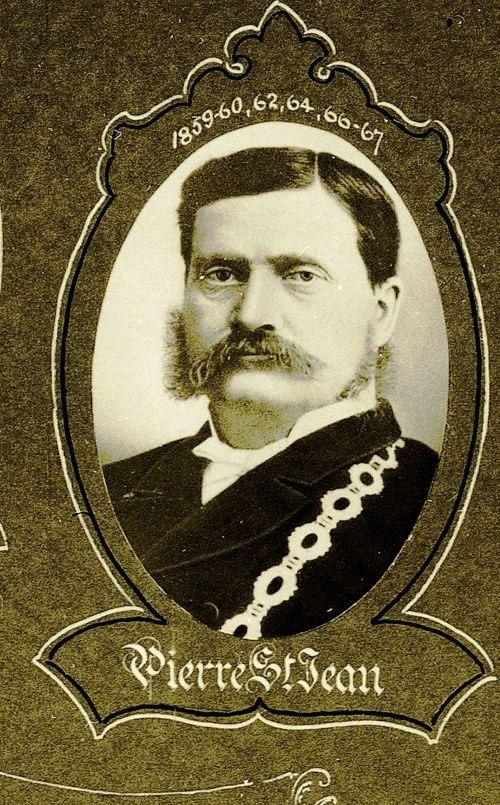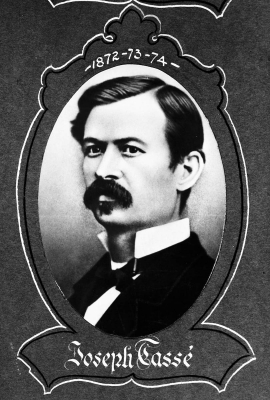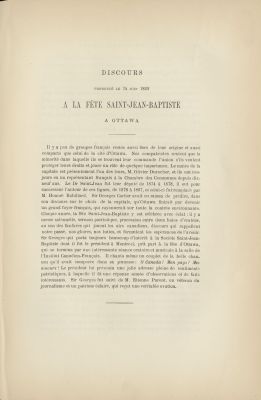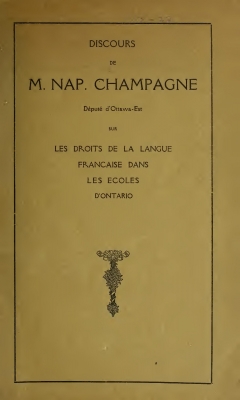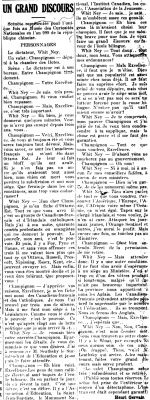In the wake of Confederation, a peculiarity in the City of Ottawa electoral district provides the city’s Francophones with a voice in the House of Commons. From 1872 to 1935, two representatives are elected to Parliament from this constituency. By convention or by tacit agreement, one represents the English community west of the Rideau Canal, while the other, except in rare exceptions, represents the Francophone community east of the Rideau Canal. While the former belong mostly to the commercial elite (lumber industry, railways, utilities), the latter are members of the liberal professions (lawyers, doctors, journalists).
A doctor, Pierre Saint-Jean, becomes the first Francophone representative of the City of Ottawa in the House of Commons. When he is elected in 1874, he already numbers among Ottawa’s most prominent personalities. His medical office is attached to the hospital operated by the Grey Nuns, and he is part of the first team of regular staff at the institution. He helps to establish St-Joseph’s Orphanage, opened in 1858, and he is a member of the Society of Saint Vincent de Paul. Pierre Saint-Jean is credited with founding, in the same year, the first French newspaper published in Ontario, Le Progrès, of Ottawa. He also holds important positions at Ottawa’s Institut canadien-français and the Société Saint-Jean-Baptiste, which add to his influence.
Pierre Saint-Jean is succeeded in the House of Commons by equally important leaders: author and journalist Joseph Tassé (1878-1887), later appointed to the Senate; Honoré Robillard (1887-1896), an entrepreneur who is the first Francophone to sit in the Ontario Legislative Assembly from 1883 to 1886; and finally, the lawyer Napoléon-Antoine Belcourt (1896-1906), a leading figure in the defence of Franco-Ontarians rights on the federal stage. Tassé and Robillard are Conservatives, while Saint-Jean and Belcourt are Liberals. Almost all their successors as Ottawa MPs are Liberals, a tradition that continues in Ottawa East from 1935 to 1974, and then in Ottawa-Vanier from 1974 until today.
Ottawa is not unique in this regard. As early as the 1870s in the federal arena, Ontario Francophones abandon the Conservatives for the Liberals, who are rightly or wrongly perceived as more supportive of French Canada and minorities. The election of a French Canadian, Wilfrid Laurier, to lead the Liberal Party of Canada in 1887 offers another explanation for this political realignment. The school crisis is the final straw. Triggered by the decision of Ontario’s Conservative Government to ban teaching in French beyond the second year of primary education in schools across the province, it definitely tips the balance in favour of the Liberals.
Portrait of Pierre St-Jean, President of the Institut canadien-français d’Ottawa (1859-1860, 1862, 1864), taken from a mosaic of former presidents of the Institut canadien-français d’Ottawa, 1866-1867. He is also the first Francophone representative of the City of Ottawa in the House of Commons [Ottawa], [ca. 1859].
University of Ottawa, CRCCF, Fonds Institut canadien-français d’Ottawa (C36), Ph38-67.
